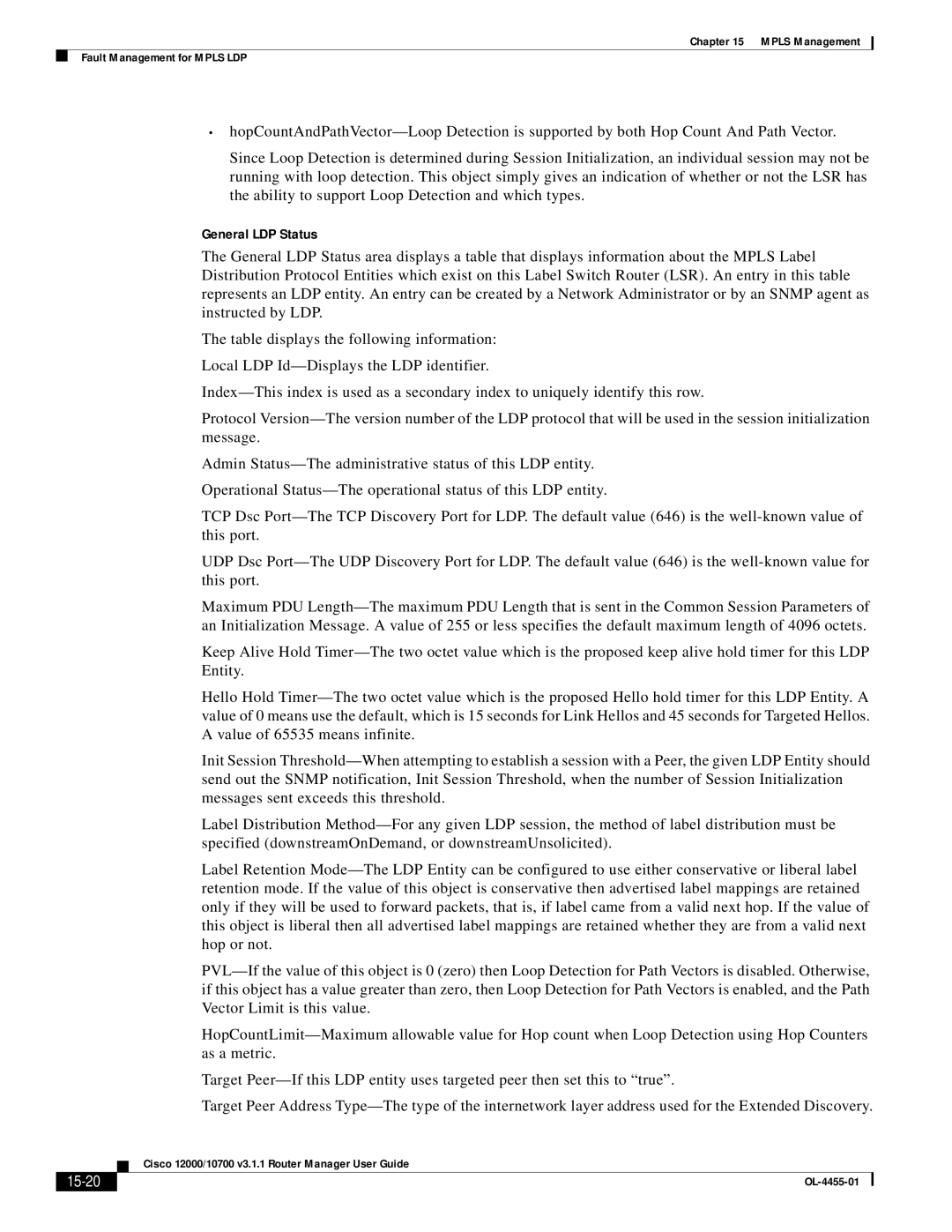
Chapter 15 MPLS Management
Fault Management for MPLS LDP
•
Since Loop Detection is determined during Session Initialization, an individual session may not be running with loop detection. This object simply gives an indication of whether or not the LSR has the ability to support Loop Detection and which types.
General LDP Status
The General LDP Status area displays a table that displays information about the MPLS Label Distribution Protocol Entities which exist on this Label Switch Router (LSR). An entry in this table represents an LDP entity. An entry can be created by a Network Administrator or by an SNMP agent as instructed by LDP.
The table displays the following information:
Local LDP
Protocol
Admin
Operational
TCP Dsc
UDP Dsc
Maximum PDU
Keep Alive Hold
Hello Hold
Init Session
Label Distribution
Label Retention
Target
Target Peer Address
| Cisco 12000/10700 v3.1.1 Router Manager User Guide |
|
